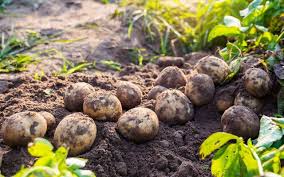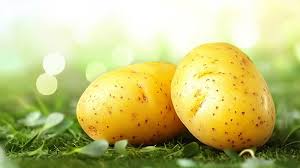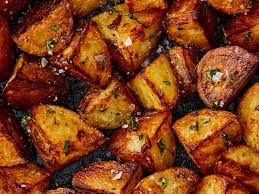Surprising Superfoods: Potatoes

When people think of superfoods, they often picture kale smoothies, acai bowls, or exotic seeds shipped from across the globe. Yet one of the most powerful, affordable, and versatile superfoods has been on our plates for centuries: the potato
Nutritional powerhouse
Despite its reputation as a starchy carb, the potato is packed with essential nutrients. A medium-sized potato (with skin) contains:
- Vitamin C: Around 30% of daily needs, crucial for immunity and collagen production.
- Potassium: More than a banana, supporting heart health and blood pressure regulation
- Fibre: When eaten with the skin, potatoes help support gut health and satiety
- B vitamins: Including B6, important for metabolism and brain health
- Antioxidants: Such as flavonoids and carotenoids, which help reduce oxidative stress
Potatoes are naturally low in fat, cholesterol-free, and provide slow-release carbohydrates for steady energy
More than just white potatoes
The potato family is diverse. Purple, red, and yellow varieties contain different phytonutrients and antioxidants. For example:
- Purple potatoes are rich in anthocyanins, compounds linked to reduced inflammation and improved vascular health
- Yellow and gold potatoes have higher carotenoid content, supporting eye health
This variety makes potatoes nutritionally versatile and visually appealing on the plate
Cultural and historical significance
Native to the Andes, potatoes have been a staple for thousands of years, sustaining civilisations with their resilience and nutrition. When introduced to Europe in the 16th century, they helped alleviate famine and transformed diets. In many ways, the potato has been humanity’s quiet survival food
Debunking the Myths
Potatoes often get a bad reputation because of how they’re prepared. French fries and chips—high in oil, salt, and additives—are not representative of the potato itself. Boiled, baked, steamed, or roasted with minimal fat, the potato is one of the healthiest and most filling foods available
A Superfood for the Future
With climate challenges and a growing global population, the potato stands out as a sustainable crop. It requires relatively little water, grows in diverse climates, and produces high yields per acre. For communities struggling with food security, potatoes could remain a vital resource
How to enjoy potatoes as part of a balanced diet
You don’t have to cut out starches from their diet completely, but you have to eat them wisely. Here’s how to maximise the nutrition of your potatoes:
Cook at home
Making your own potato dishes instead of ordering at a restaurant gives you control over how much salt, oil and fat you use. The most effective method is to boil or steam the potato, but you can cook it anyway you want. If you love crispy potatoes, roasting is far more preferable to frying
Always leave the skin on
Yes, even if you’re mashing potatoes. The skin is where most of that nutrition is packed, so when you peel your potatoes, you’re throwing away excellent fibre that increases feelings of satiety, improves digestion and supports weight management
 Keep portion size in mind
Keep portion size in mind
Regardless of the type of starch you’re eating, they ideally should not be at the centre of your plate. When building that plate, fill one-quarter with starch such as potatoes (a fist- or cricket ball-sized portion is a serving), one-quarter with protein and the rest with non-starchy vegetables
Before you eat potatoes, consider letting them cool
Some research has suggested that cold potatoes contain higher amounts of a beneficial carbohydrate called resistant starch. When the potato cooks and cools, the structure of the starch reorganises itself, and it becomes less digestible. Since resistant starch digests more slowly, it feeds good bacteria in your gut, improving glycaemic control
If you love French fries, try making them yourself
Home-cooked fries can still be pretty good. Cut a potato into wedges, coat them in avocado or canola oil, and bake in the oven. An air fryer can take a potato to another level. Just wash it, scrub it, keep the skin on, toss with some oil and seasoning, and stick it in the air fryer. Perfect!
Conclusion
The potato may not have the exotic marketing appeal of trendy superfoods, but its nutritional density, history of sustaining populations, and culinary versatility make it worthy of the title. It’s time we look past the hype and give the humble potato the recognition it deserves as one of the world’s original superfoods
Leave a reply
You must be logged in to post a comment.







